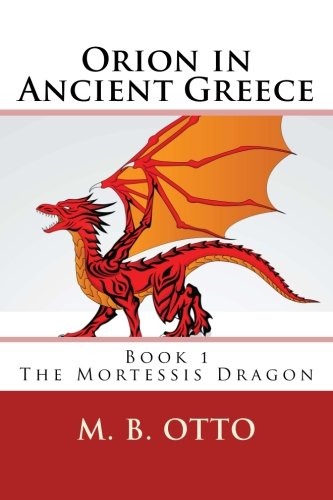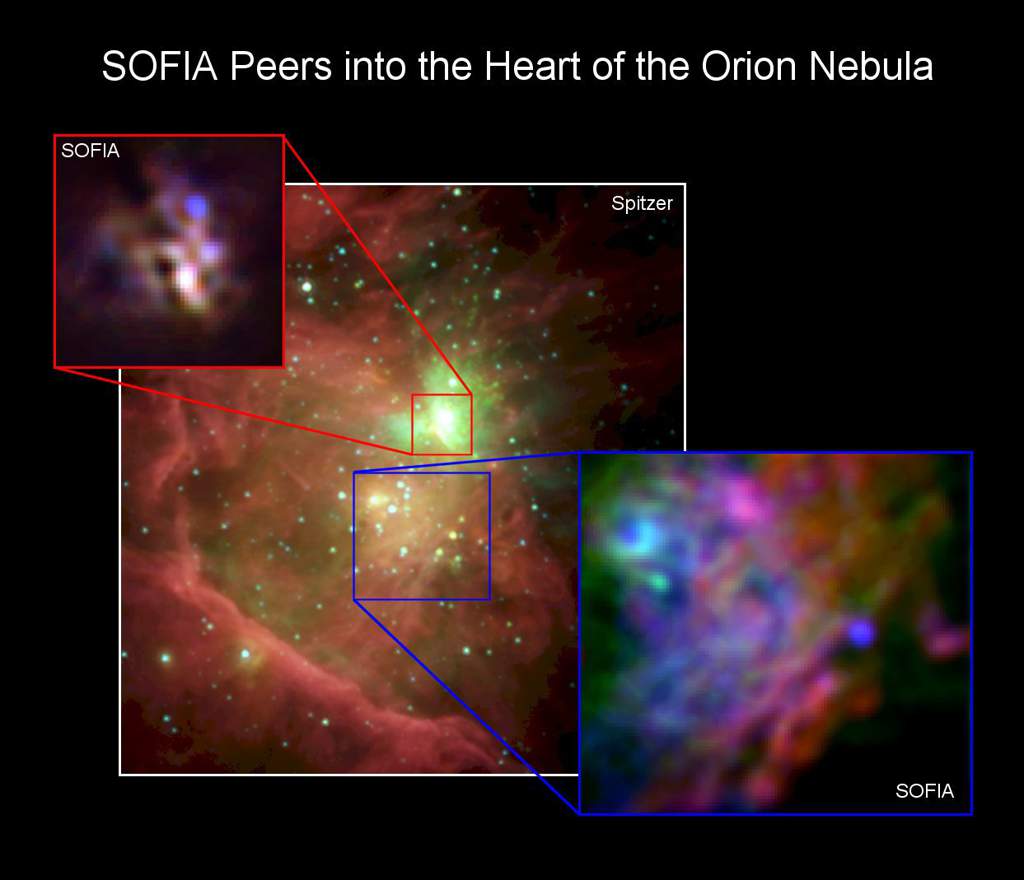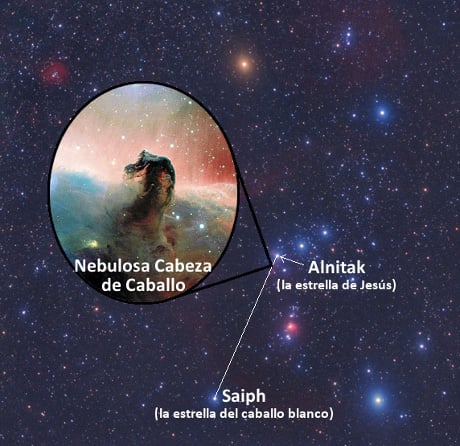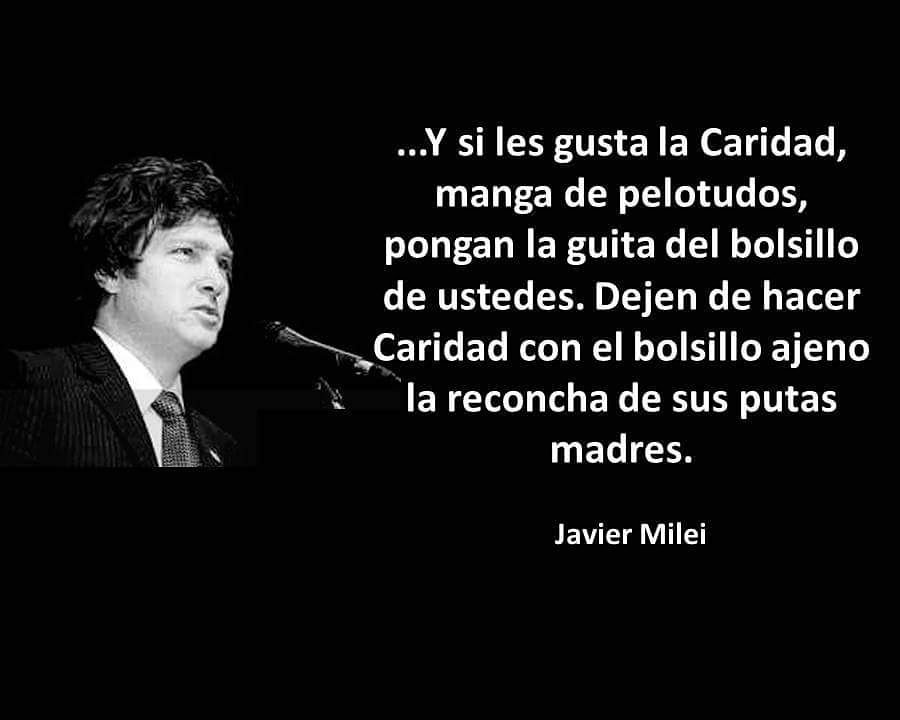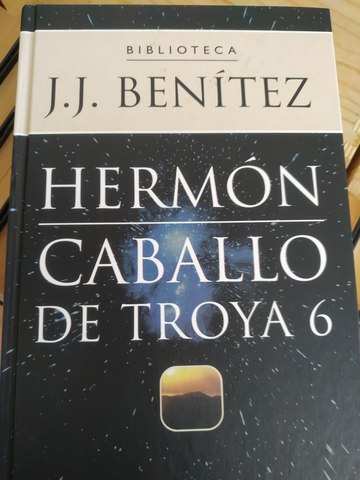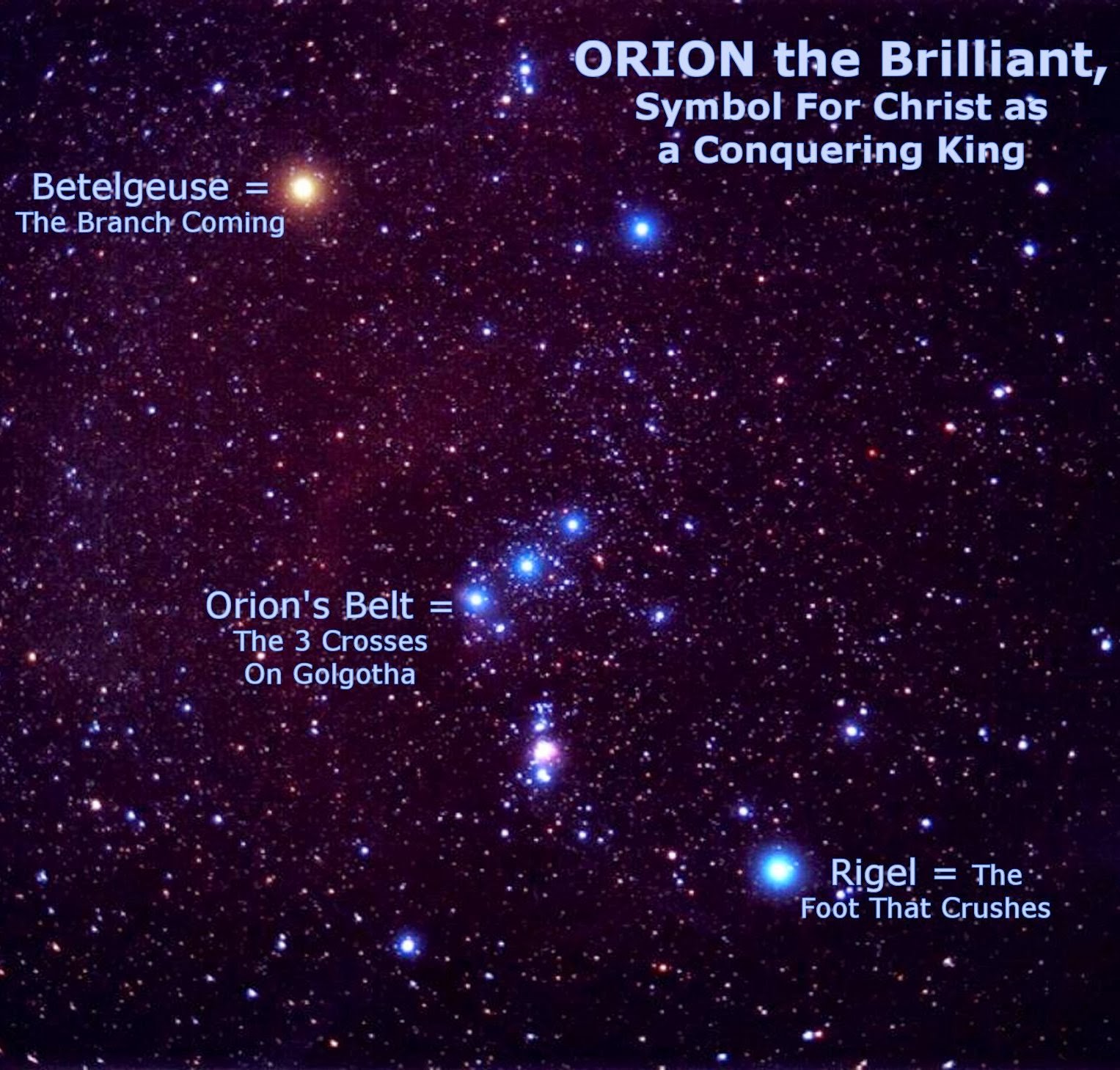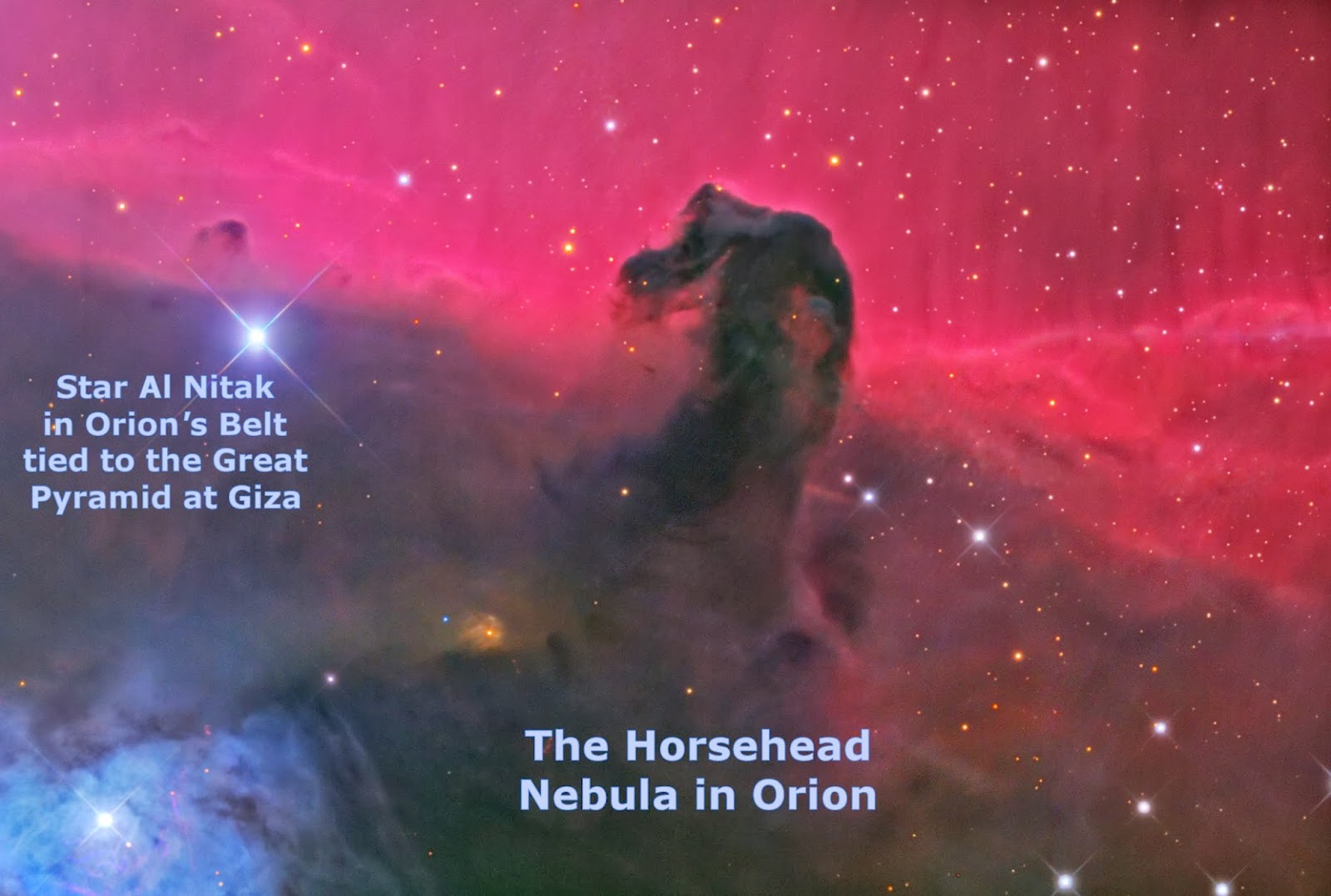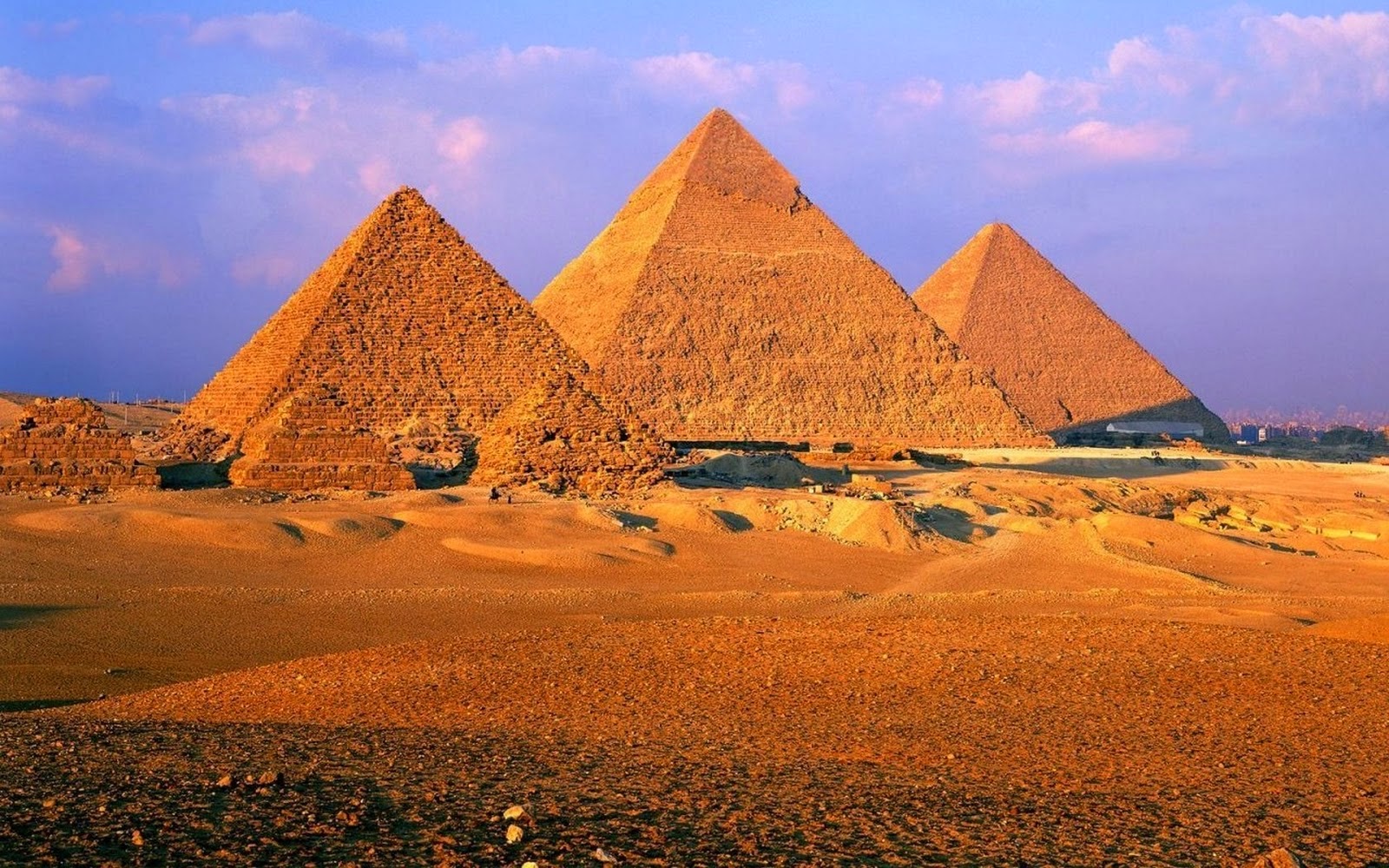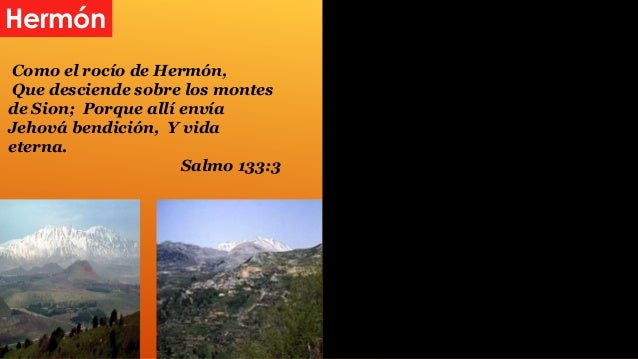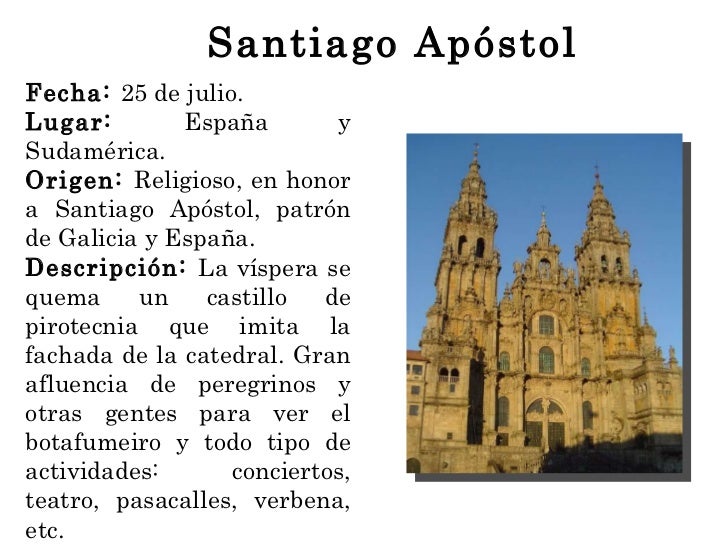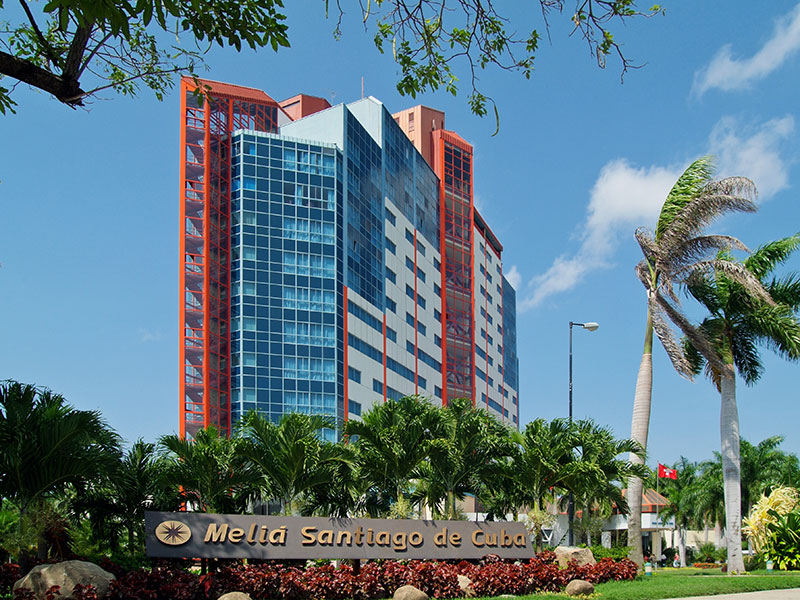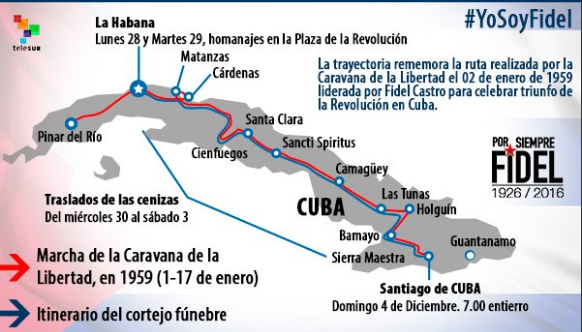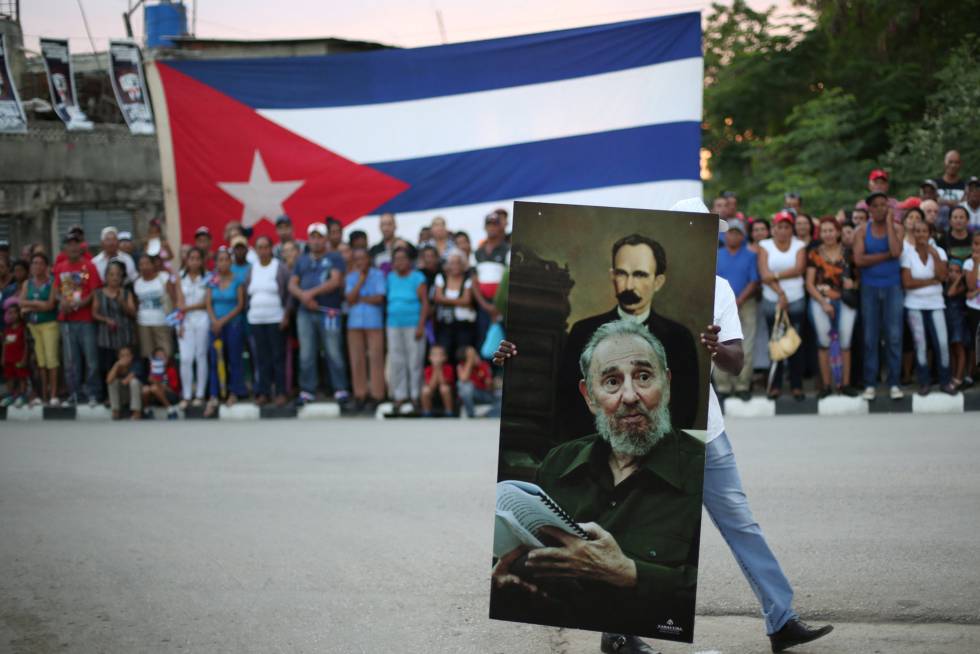|
|
General: NEBULOSA CABEZA DE CABALLO O BARNARD 33 (B33)-CONTELACION DE ORION
Choisir un autre rubrique de messages |
|
Réponse |
Message 1 de 25 de ce thème |
|
Nebulosa Cabeza de Caballo
De Wikipedia, la enciclopedia libre
La nebulosa Cabeza de Caballo (Horsehead Nebula en inglés) o Barnard 33 (B33), es una nube de gas fría y oscura, situada a unos 1.500 años luz de la Tierra, al sur del extremo izquierdo del Cinturón de Orión. Forma parte del Complejo de Nubes Moleculares de Orión, y mide aproximadamente 3,5 años luz de ancho. Esta nebulosa oscura es visible por contraste, ya que aparece por delante de la nebulosa de emisión IC 434. Por su forma es la más familiar de las nebulosas de absorción.
El color rojizo de la nebulosa de emisión se origina por la recombinación de los electrones con los protones de los átomos de hidrógeno. La estrella más brillante, situada a la izquierda de la nebulosa, es la popular Alnitak (ζ Orionis) del Cinturón de Orión. La forma inusual de Cabeza de Caballo fue descubierta por primera vez en una placa fotográfica a finales del siglo XIX por Williamina Fleming, en el Observatorio del Harvard College. El primero en incluir en un catálogo a la Nebulosa Cabeza de Caballo fue Edward Emerson Barnard de la Familia Barnard, en 1919.[1]
Entorno de la nebulosa[editar]
En la foto del entorno se ven también nebulosas de reflexión, que reflejan preferentemente la luz azul de las estrellas cercanas.
En la fotografía también puede verse, en color anaranjado, la Nebulosa de la Flama, catalogada como NGC 2024, en la parte inferior izquierda. Recibe este nombre por su parecido con una hoguera. Un franja oscura de polvo interestelar absorbente se destaca en silueta contra el resplandor de la emisión del hidrógeno y, de hecho, oculta la verdadera fuente de energía de la Nebulosa de la Flama. Detrás de la franja oscura yace un cúmulo de estrellas jóvenes y calientes, vistas a longitudes de onda infrarrojas a través del polvo oscurecedor. Una estrella masiva joven de ese cúmulo es la fuente probable de la intensa radiación ultravioleta que ioniza el gas de hidrógeno de la Nebulosa de la Flama.
En la imagen también se aprecia la nebulosa NGC 2023, debajo de IC 434; es una nebulosa de reflexión, de ahí su característico color azulado. IC 431 aparece justo a la izquierda de la Nebulosa de la Flama.
Referencias[editar]
- Ir a ↑ Barnard, E. E. (1919). «On the dark markings of the sky, with a catalogue of 182 such objects». The Astrophysical Journal 49. p. 1.
http://es.wikipedia.org/wiki/Nebulosa_Cabeza_de_Caballo
|
|
|
|
Réponse |
Message 11 de 25 de ce thème |
|
|
|
|
Réponse |
Message 12 de 25 de ce thème |
|
|
|
|
Réponse |
Message 13 de 25 de ce thème |
|
|
|
|
Réponse |
Message 14 de 25 de ce thème |
|
8 ene. 2019 - NASA's SOFIA has captured a far-infrared view of the Orion Nebula that ... like a sea horse or a pterodactyl, but it looks like a dragon to me.”.
|
|
|
|
Réponse |
Message 15 de 25 de ce thème |
|
|
|
|
8 ene. 2019 - NASA's SOFIA has captured a far-infrared view of the Orion Nebula that ... like a sea horse or a pterodactyl, but it looks like a dragon to me.”. |
|
|
|
|
El dragón en la nebulosa de Orión
Por: Monica Young | https://www.skyandtelescope.com/astronomy-news/the-dragon-in-orions-nebula/ |
|
|
|
|
|
|
Réponse |
Message 16 de 25 de ce thème |
|
7 ene. 2019 - ... astronomers have uncovered a structure in the Orion Nebula that may ... like a sea horse or a pterodactyl, but it looks like a dragon to me.".
13 feb. 2019 - (Inside Science) -- Since ancient times, people gazing up at the night sky have seen animals, gods and goddesses, and other entities in the ...
Falta(n): horse
10 ene. 2019 - The Dragon in the Orion Nebula ... "A few people have said it looks like a sea horse or a pterodactyl, but it looks like a dragon to me.".
21 jun. 2011 - Post with 742 votes and 21649 views. Shared by ipwntmario. Dragon battle seen in Orion Nebula (enhanced pic)
18 jun. 2017 - Man vs dragon in the Orion nebula. ... Mute User. Report. all i see is a horseand a mokey which both look like super derps. Reply. badgerai via ...
Mystic Mountain Carina Nebula Poster Refinance House Watch this before Refin - Mortgage Refinance - Watch this before your refiannce your mortgage -.
Anuncio
-
Astronomy Planning Made Easy - 100% free! Use the Telescope Simulator to check camera or eyepiece framing. deep sky, planets, comets. telescope simulator. amateur astrophotography.
|
|
|
|
Réponse |
Message 17 de 25 de ce thème |
|
|
|
|
Réponse |
Message 18 de 25 de ce thème |
|
|
|
|
Réponse |
Message 19 de 25 de ce thème |
|
|
|
|
Réponse |
Message 20 de 25 de ce thème |
|
|
|
|
Réponse |
Message 21 de 25 de ce thème |
|
hace 3 días - Manipularon la historia a través de las fuentes de los textos en su lenguaje inventado llamado Latín, peeeeero no pudieron cambiar el ... Jose Alfonso Hernando ... la famosa batalla de Troya, y HASTA AHÍ NOS VAMOS PARA VER QUE ... “Las matemáticas nos hacen más libres y menos manipulables”.
hace 3 días - Principal / Valdeande Magico / ¡¡¡ Visitamos TROYES, donde fue la Guerra de Troya !!! ¡¡¡ Visitamos TROYES, donde fue la Guerra de Troya !!!
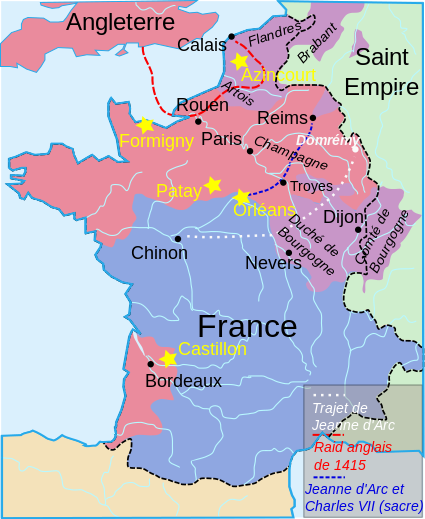

Troyes is the former capital of Champagne and is a perfect short trip visit from Paris. At just an hour and a half by train it can be a day trip but a couple of days and an overnight stay would be better because there’s so much to see and do in this lovely, vibrant city.
A town that is shaped like a Champagne cork in Champagne?
Troyes is an ancient city, once a Roman town with a direct road from Milan and onwards to Boulogne-sur-Mer on the Opal Coast in the north of France – the route for the invasion of Britain. Later the rich and powerful Counts of Champagne built a palace in Troyes and it was a prosperous place that attracted merchants from all over Europe. The counts fortified their town and though at that time Champagne didn’t even exist, the walls took the form of a Champagne cork.
Following a huge fire in 1524 that destroyed many of the ancient buildings that were constructed from wood, new brick buildings were erected and many of them remain to this day. Indeed the inhabitants of Troyes lived in these buildings pretty much as they had been for hundreds of years right up until the 1950s. It was a decade when the town council went on a bit of a renovation rampage to improve conditions since many of the old buildings had no bathrooms and poor hygiene conditions.
Fortunately they didn’t destroy too much and visiting Troyes is like stepping back in time. Every street seems to have its quota of half-timbered houses and there are cobbled streets and tiny alleyways that create a mesmerising maze in the centre of the old town of Troyes. In the little ruelle des Chats (Cats Alley) you’ll see it is so narrow that the houses lean in and touch via a central gutter at the top and cats could cross from houses on both sides of the roads. At the side of the office of the Mutuelle Societe at 111 rue Emile Zola you can enter a gate and at the back you’ll discover a stunning renaissance house looking exactly as it did when it was built. At the Cour du Mortier d’or, the ancient timber frames still bear the workman’s trademarks.
Everywhere you go here you’ll discover traces of history from hundreds of years ago, quaint, quirky and irresistibly charming…
Read the rest of this story in our free magazine – click here to go straight to it!
|
|
|
|
Réponse |
Message 22 de 25 de ce thème |
|
Nebulosa Cabeza de Caballo
De Wikipedia, la enciclopedia libre
| Nebulosa Cabeza de Caballo |
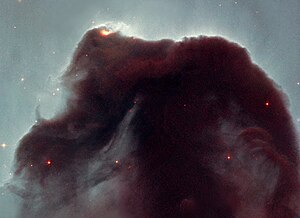 |
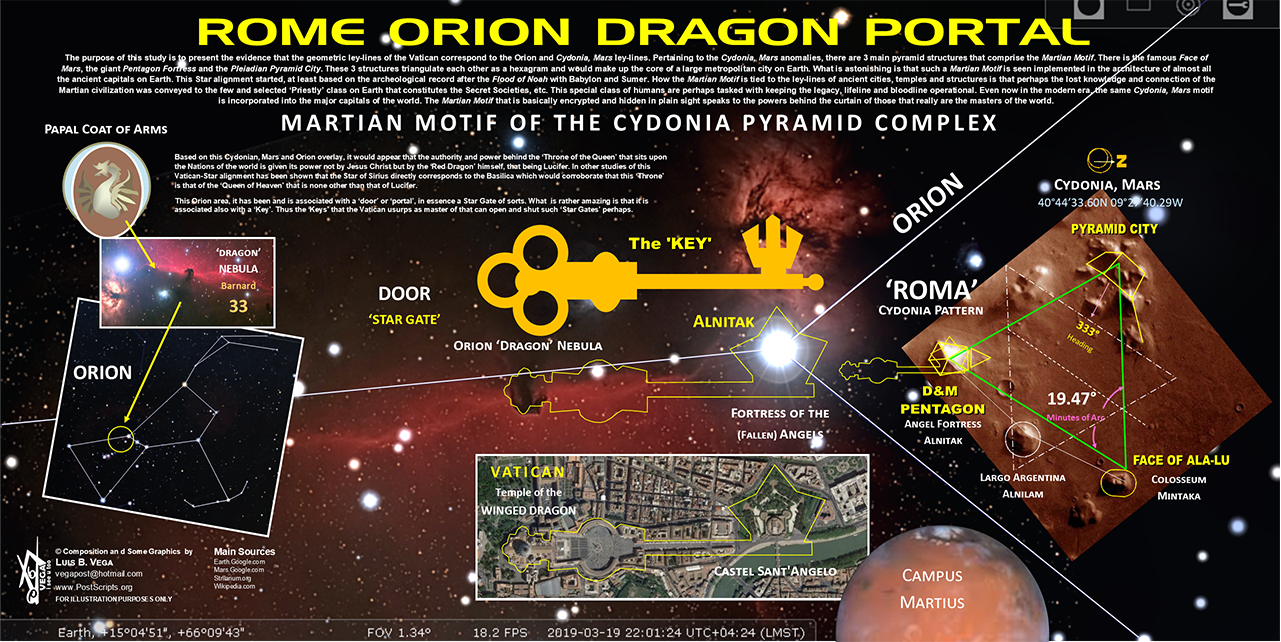
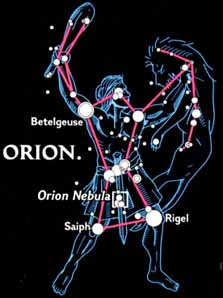
Statue of Liberty
The height of the Statue of Liberty is 111′-1″ from bottom of foot to top of head. The 7 rays on the crown and the 11 points of the base star echo the proportions of the Great Pyramid’s 7:11 height to base proportion. The superb book Talisman by Graham Hancock and Robert Bauval convincingly shows this goddess is actually the Egyptian Isis.
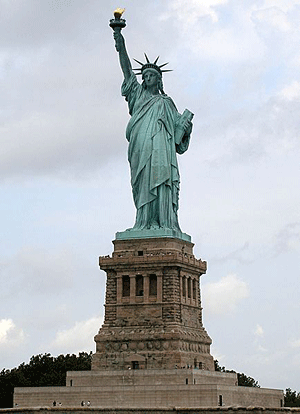
Image courtesy Elcobbola under the Creative Commons Attribution-Share Alike 3.0 Unported license.
http://www.viewzone.com/onstott66.html


hace 3 días - Manipularon la historia a través de las fuentes de los textos en su lenguaje inventado llamado Latín, peeeeero no pudieron cambiar el ... Jose Alfonso Hernando ... la famosa batalla de Troya, y HASTA AHÍ NOS VAMOS PARA VER QUE ... “Las matemáticas nos hacen más libres y menos manipulables”.
hace 3 días - Principal / Valdeande Magico / ¡¡¡ Visitamos TROYES, donde fue la Guerra de Troya !!! ¡¡¡ Visitamos TROYES, donde fue la Guerra de Troya !!!


Troyes is the former capital of Champagne and is a perfect short trip visit from Paris. At just an hour and a half by train it can be a day trip but a couple of days and an overnight stay would be better because there’s so much to see and do in this lovely, vibrant city.
A town that is shaped like a Champagne cork in Champagne?
Troyes is an ancient city, once a Roman town with a direct road from Milan and onwards to Boulogne-sur-Mer on the Opal Coast in the north of France – the route for the invasion of Britain. Later the rich and powerful Counts of Champagne built a palace in Troyes and it was a prosperous place that attracted merchants from all over Europe. The counts fortified their town and though at that time Champagne didn’t even exist, the walls took the form of a Champagne cork.
Following a huge fire in 1524 that destroyed many of the ancient buildings that were constructed from wood, new brick buildings were erected and many of them remain to this day. Indeed the inhabitants of Troyes lived in these buildings pretty much as they had been for hundreds of years right up until the 1950s. It was a decade when the town council went on a bit of a renovation rampage to improve conditions since many of the old buildings had no bathrooms and poor hygiene conditions.
Fortunately they didn’t destroy too much and visiting Troyes is like stepping back in time. Every street seems to have its quota of half-timbered houses and there are cobbled streets and tiny alleyways that create a mesmerising maze in the centre of the old town of Troyes. In the little ruelle des Chats (Cats Alley) you’ll see it is so narrow that the houses lean in and touch via a central gutter at the top and cats could cross from houses on both sides of the roads. At the side of the office of the Mutuelle Societe at 111 rue Emile Zola you can enter a gate and at the back you’ll discover a stunning renaissance house looking exactly as it did when it was built. At the Cour du Mortier d’or, the ancient timber frames still bear the workman’s trademarks.
Everywhere you go here you’ll discover traces of history from hundreds of years ago, quaint, quirky and irresistibly charming…
Read the rest of this story in our free magazine – click here to go straight to it!
|
|
|
|
Réponse |
Message 23 de 25 de ce thème |
|
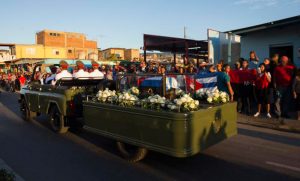 Después de una semana de ceremonias y de un cortejo fúnebre que recorrió casi toda la isla, las cenizas del ya mítico líder de la Revolución Cubana, Fidel Castro, realizaron hoy su camino final desde el Parque de la Revolución en la ciudad de Santiago de Cuba hasta el cementerio de Santa Ifigenia, donde fueron finalmente enterradas en una ceremonia privada. Después de una semana de ceremonias y de un cortejo fúnebre que recorrió casi toda la isla, las cenizas del ya mítico líder de la Revolución Cubana, Fidel Castro, realizaron hoy su camino final desde el Parque de la Revolución en la ciudad de Santiago de Cuba hasta el cementerio de Santa Ifigenia, donde fueron finalmente enterradas en una ceremonia privada.
Los restos mortales de Fidel Castro llegaron el sábado por última vez a la ciudad de Santiago de Cuba, su lugar de descanso final, donde el pueblo podrá despedirse del líder en un acto multitudinario esta tarde, antes de la ceremonia de inhumación prevista para mañana domingo.
El cortejo fúnebre, que sigue en sentido inverso el camino de la "Caravana de la Libertad" de 1959, entró a la capital oriental por la localidad de El Cobre, donde se encuentra la imagen de la Virgen de la Caridad -la Patrona de Cuba-, considerada la protectora de los luchadores por la independencia en la isla.
A ambos lados de la Carretera Central, miles de santiagueros recibieron el cortejo fúnebre con vítores, banderas cubanas y retratos del exmandatario, una escena que se ha repetido durante los cuatro días que ha durado el trayecto por casi toda la isla.
Entre el público ondeaban además múltiples enseñas rojinegras del Movimiento 26 de Julio, grupo rebelde comandado por Fidel, que tuvo una fuerte presencia en Santiago durante los tres años que duró la lucha, que terminaría con el triunfo de la Revolución Cubana en enero de 1959.
Nombrada "Ciudad Héroe" por el gobierno cubano, la ciudad fue escenario de cruentos enfrentamientos entre clandestinos que combatían a Fulgencio Batista, además de ser uno de los puntos más importantes de apoyo al "Ejército Rebelde" de Fidel, por su cercanía a la Sierra Maestra, base de los guerrilleros.
La urbe también está muy ligada a la trayectoria histórica de Castro porque en ella está ubicado el cuartel Moncada, cuyo ataque fallido marca el inicio de la insurrección liderada por Castro y donde ofreció su ahora famoso alegato de defensa conocido como "La historia me absolverá", en el que expuso su programa de lucha.
La urna de cedro que contiene las cenizas del comandante en jefe recorrerá las principales avenidas de la capital oriental, también llamada "Cuna de la Revolución", hasta llegar al Moncada, convertido en una ciudad escolar.
Desde allí se trasladará en la tarde a la plaza Antonio Maceo, donde se celebrará un último acto masivo de despedida, con la presencia de delegaciones internacionales y que concluirá con las palabras del hermano menor del líder, el actual presidente cubano, Raúl Castro.
El domingo, a las 7 am hora local, las cenizas recorrerán una última vez la ciudad y en una ceremonia íntima, a la que no se prevé acceso a los medios, serán inhumadas en el cementerio Santa Ifigenia, necrópolis de próceres y mártires, donde descansará junto al Héroe Nacional cubano, José Martí.
|
|
|
|
Réponse |
Message 24 de 25 de ce thème |
|
|
|
|
Réponse |
Message 25 de 25 de ce thème |
|
|
|
 Premier Premier
 Précédent
11 a 25 de 25
Suivant Précédent
11 a 25 de 25
Suivant
 Dernier
Dernier

|
|
| |
|
|
©2025 - Gabitos - Tous droits réservés | |
|
|
 Después de una semana de ceremonias y de un cortejo fúnebre que recorrió casi toda la isla, las cenizas del ya mítico líder de la Revolución Cubana, Fidel Castro, realizaron hoy su camino final desde el Parque de la Revolución en la ciudad de Santiago de Cuba hasta el cementerio de Santa Ifigenia, donde fueron finalmente enterradas en una ceremonia privada.
Después de una semana de ceremonias y de un cortejo fúnebre que recorrió casi toda la isla, las cenizas del ya mítico líder de la Revolución Cubana, Fidel Castro, realizaron hoy su camino final desde el Parque de la Revolución en la ciudad de Santiago de Cuba hasta el cementerio de Santa Ifigenia, donde fueron finalmente enterradas en una ceremonia privada.



